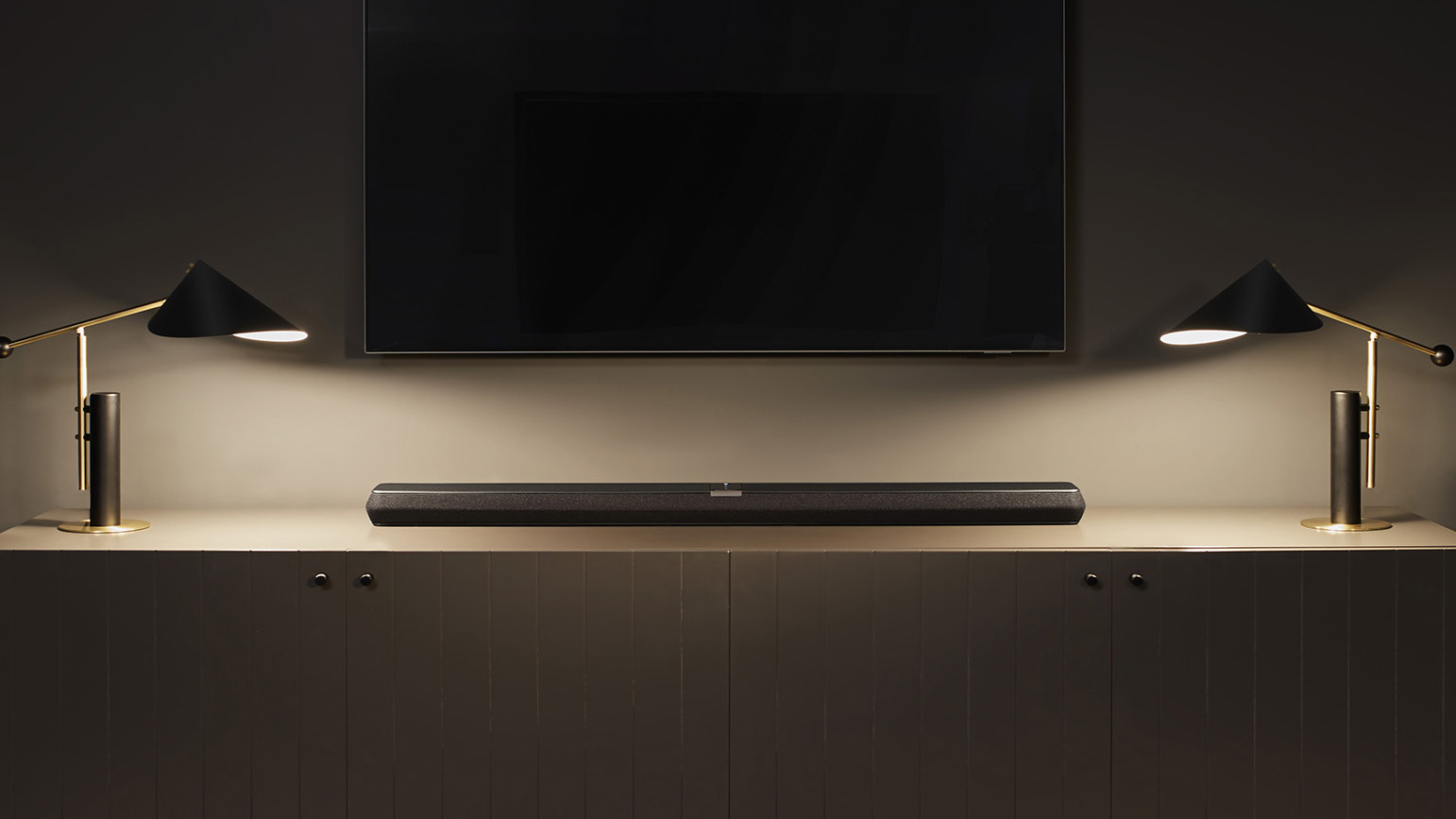
Bowers & Wilkins – the British hi-fi legend, and frequent creator of products that score five stars here on the pages of T3 – has announced its latest soundbar, which features fully 13 speaker drivers backed by 400W of amplification in the pursuit of great Dolby Atmos sound.
Called the Panorama 3, the soundbar is built around six mid-range drive units, three high-end tweeters, two bass units, and two upfiring drivers for Dolby Atmos height channels. They combine into a 3.1.2-channel effect – basically, like 5.1.2 surround sound, but without the rear channels. It'll cost £899/$999, and will go on-sale during March.
I'm fully expecting this model to be massively competitive in our list of the best soundbars, because B&W has a strong habit of knocking it out of the park recently. Take the full marks we gave to the B&W Zeppelin, or the B&W PI7 headphones, or the B&W Formation Duo speakers.
Or even take the last time we looked at some TV speaker tech from B&W: it makes the built-in audio system in the Philips OLED+936 TV, to which we gave… yep, it's five stars.
Between B&W's general audio prowess, the high number of speakers it's using (two more than even the incredibly impressive 11-speaker Sonos Arc) and big amp power going into it, I think this is going to be one of the most exciting-sounding soundbars of the year – especially if you want a single bar without subwoofer or rear speakers.

I'm also expecting it to be fantastic with music, which is increasingly becoming a big draw for soundbars – why not make it your main speaker in the living room, after all? It's already there.
There's support for aptX Adaptive Bluetooth, Spotify Connect and Apple AirPlay 2 wireless streaming for playing music on it, which will cover most people nicely.
Get all the latest news, reviews, deals and buying guides on gorgeous tech, home and active products from the T3 experts
I do have one major complaint about it, though, which is that there's no HDMI passthrough. You've got an HDMI eARC for connecting to your TV, but with no additional HDMI ports, you'll basically lose the use of that one connection. This can mean that it isn't an ideal choice for some TVs – for example, if your TV's HDMI eARC port is also one of a limited number of HDMI 2.1 ports or even of 4K HDMI 2.0 ports on some older TVs; or if your TV doesn't support Dolby Atmos, since it means you may not get the full effect of next-gen audio.
If it had HDMI passthrough, then you'd still have full use of your ports, or it would be able to take the Dolby Atmos signal directly from a Blu-ray player or set-top box.
For this price, I think a soundbar really ought to include at least one HDMI passthrough port, because it makes them available to more people. However, I use a Sonos Arc at home, which has the exact same limitation, so here's also a reminder that these products can still work for people no problem – it just depends on your setup.
And when it comes to soundbars, a lot can be forgiven for the right sound quality anyway. We'll have a full review of the Panorama 3 soon, to find out whether it lives up to the expectations.

Matt is T3's former AV and Smart Home Editor (UK), master of all things audiovisual, overseeing our TV, speakers and headphones coverage. He also covered smart home products and large appliances, as well as our toys and games articles. He's can explain both what Dolby Vision IQ is and why the Lego you're building doesn't fit together the way the instructions say, so is truly invaluable. Matt has worked for tech publications for over 10 years, in print and online, including running T3's print magazine and launching its most recent redesign. He's also contributed to a huge number of tech and gaming titles over the years. Say hello if you see him roaming the halls at CES, IFA or Toy Fair. Matt now works for our sister title TechRadar.
